ASUS ZenFone Selfie: The funkiest ZenFone handset yet?
Is the ASUS ZenFone Selfie just another selfie-centric smartphone? Contrary to its naming scheme, it is actually positioned to eclipse the recent ZenFone 2 series with an added dimension. Equipped with 13-megapixel cameras on the front and rear, can the ZenFone Selfie take on its immediate rival, the HTC Desire Eye and other selfie-centric/mainstream smartphones? We reveal all in this review!
By HardwareZone Team -
Overview
The trend for selfie-centric smartphones began sometime last year with front-facing cameras being bumped up to feature at least a 5-megapixel sensor. Sony was among the first to capitalize on the trend by touting its Xperia C3 smartphone as the world's best selfie smartphone. Soon after, other companies such as HTC (Desire Eye), Microsoft (Lumia 730/735) and Oppo (N3) jumped on the bandwagon.
ASUS' entry into this space earlier in June this year can be considered as playing catch-up, but it's better late than never. What unique features does the ASUS ZenFone Selfie bring to the table? A pair of 13-megapixel camera sensors on the front and back of the device coupled with ASUS's PixelMaster technologies! There is also a motive behind the development of the ZenFone Selfie which ASUS Chairman Jonney Shih explains in the short video below:

Design & Handling

ASUS uses the design language of the ZenFone 2 series on the ZenFone Selfie.
In terms of design, the ZenFone Selfie does not deviate much from the current category leading ZenFone 2 series. Inheriting the same design template has its pros and cons. On a positive note, the ergonomically curved back provides a natural grip for a phone of this size (it has a 5.5-inch screen). Compared to the ZenFone2, the curvature is more pronounced on the ZenFone Selfie with the chassis measuring just 3.9mm at its thinnest edge. The volume buttons at the back doubles as a camera shutter key which offers an intuitive user experience while the concentric-circle texture below the capacitive navigation keys is aesthetically pleasing and a testament to ASUS' attention to details.

A phone of its size should have the power button located on the side for easier access.
On the other hand, the design concerns with the ZenFone 2 aren't addressed on the ZenFone Selfie. In its pursuit to achieve an ultra-thin edge, ASUS thought it was a good compromise to locate the power button on the top of the phone, which unfortunately makes it hard to access on a phone this big. This issue can be circumvented if you enable the double tap gesture to activate the phone's screen on and off. Another minor concern is the lack of backlighting for the navigation keys, which makes accessing them in low-lit conditions slightly more inconvenient.
One notable difference between the ZenFone Selfie and the rest of the ZenFone 2 series is the fact that the battery can be removed. Besides the option of swapping out a faulty battery, it also gives you access to the microSD and micro-SIM card slots. Having said that, the ZenFone Selfie supports dual-SIM where both slots are capable of supporting LTE CAT 4 speeds of up to 150Mbps. Despite that, only one of the slots can tackle data and voice calls, while the other slot has to be relegated to only pure voice call functionality - the advantage is that you can select which of the slots operate in those respective modes within the phone settings to give you a certain degree of flexibility without having to manually swap SIM cards out.

The presence of a microSD memory card slot and the option to remove the battery should be welcomed by power users who need more storage space or swap out an empty battery.
5.5-inch Full-HD Display
The ZenFone Selfie comes with a 5.5-inch Full-HD 1,920 x 1,080 pixels resolution (403ppi) IPS display reinforced with Corning Gorilla Glass 4. It features full-screen lamination (a technique we've seen since the days of the HTC One X) where the cover glass and touch panel layers are fused together to eliminate the air gap. The end result gives you an impression that text and images are floating just beneath the display.
ASUS also has a screen color mode on the ZenFone Selfie which you can toggle from Balance, Bluelight Filter, Vivid to Customized (based on your preferences). The Bluelight filter is billed to help reduce eye fatigue while minimizing color distortion compared to third-party apps. For users who like to use their phones before sleep, the Bluelight Filter on the ZenFone Selfie will come in handy.

ASUS Splendid offers different modes for use in different usage scenarios.
ZenUI Features

ASUS ZenUI is one of the lightest customized overlays we've seen on Android devices. It only occupies about 7GB of storage space on the ZenFone Selfie.
ZenUI is the custom overlay that ASUS installed on its mobile devices running Android OS since 2014. To date, more than 18 million ZenUI devices are sold worldwide with over 150 million ZenUI apps download. You can check out the core features of the ZenUI here: 5 notable features of the ASUS ZenUI. Over the past year, ASUS has added more than 1,000 new features to the ZenUI which include ZenMotion, ZenUI launcher, Themes and SnapView. Some of the features were discussed in our review of the ZenFone 2. As such we will explore other features in this article:
One Hand Mode
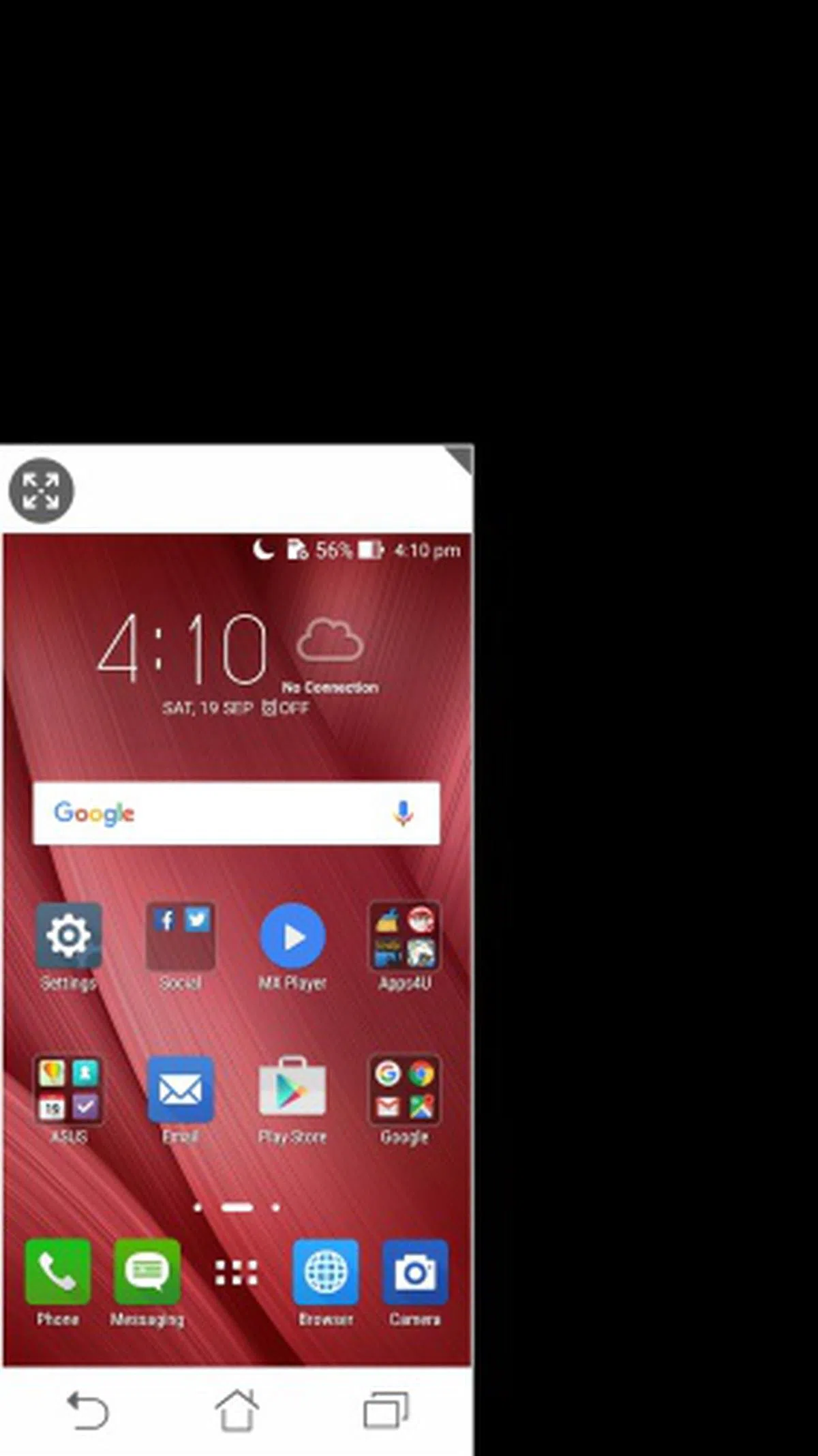 | 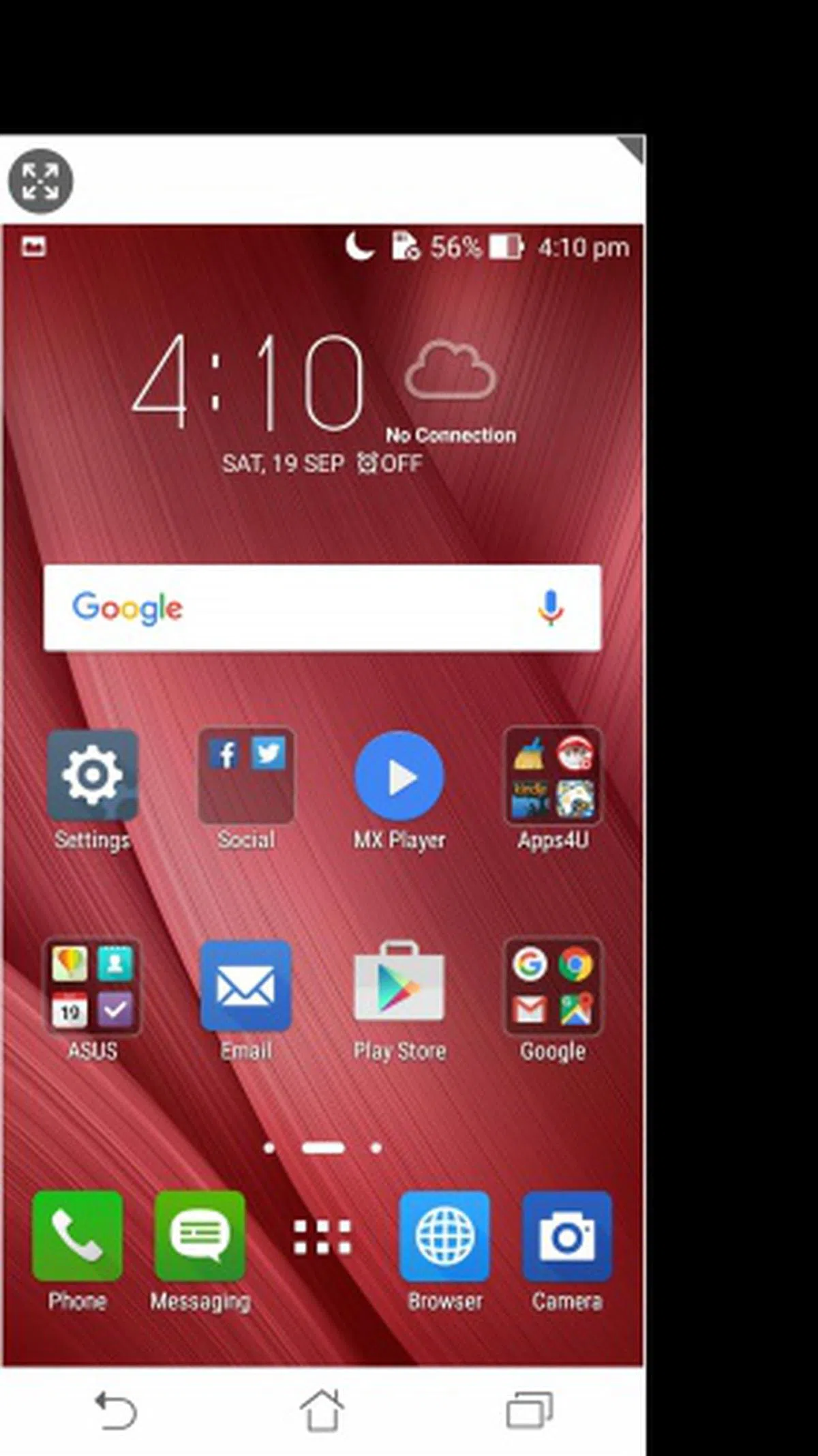 |
Like most phablets, ASUS has incorporated a software feature to make one-handed usage possible on the ZenFone Selfie. Simply known as One Hand Mode, it shrinks the interface to a size that you are comfortable with. It not only allows you to resize the interface, it also let you shift the interface from the left to anywhere (e.g. middle, top right, top left) on the display. To activate One Hand Mode, go to Settings > ZenMotion > One Hand Mode. You also can set a shortcut by double tapping the home key.
Themes and Icon Packs
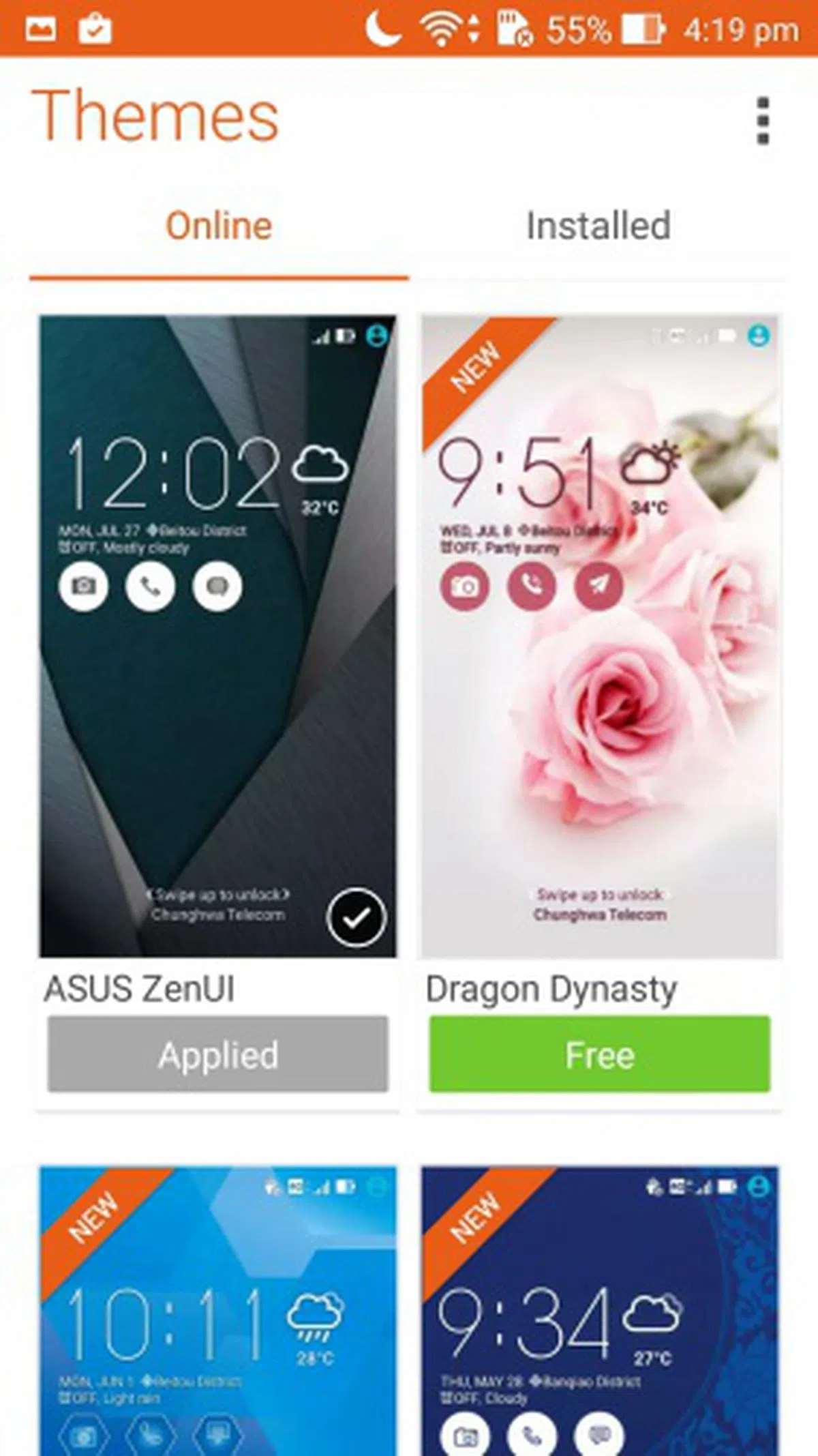 | 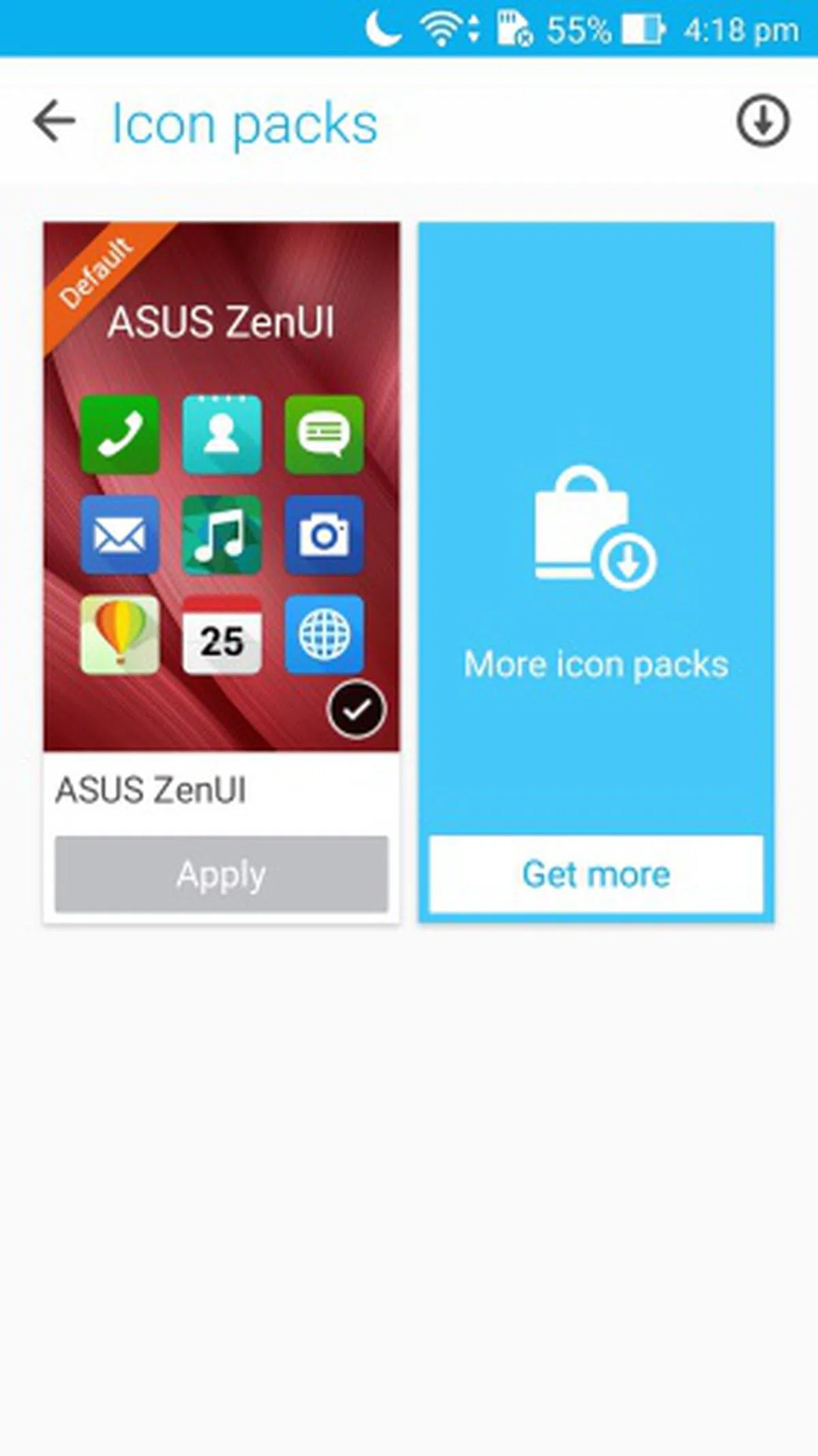 | 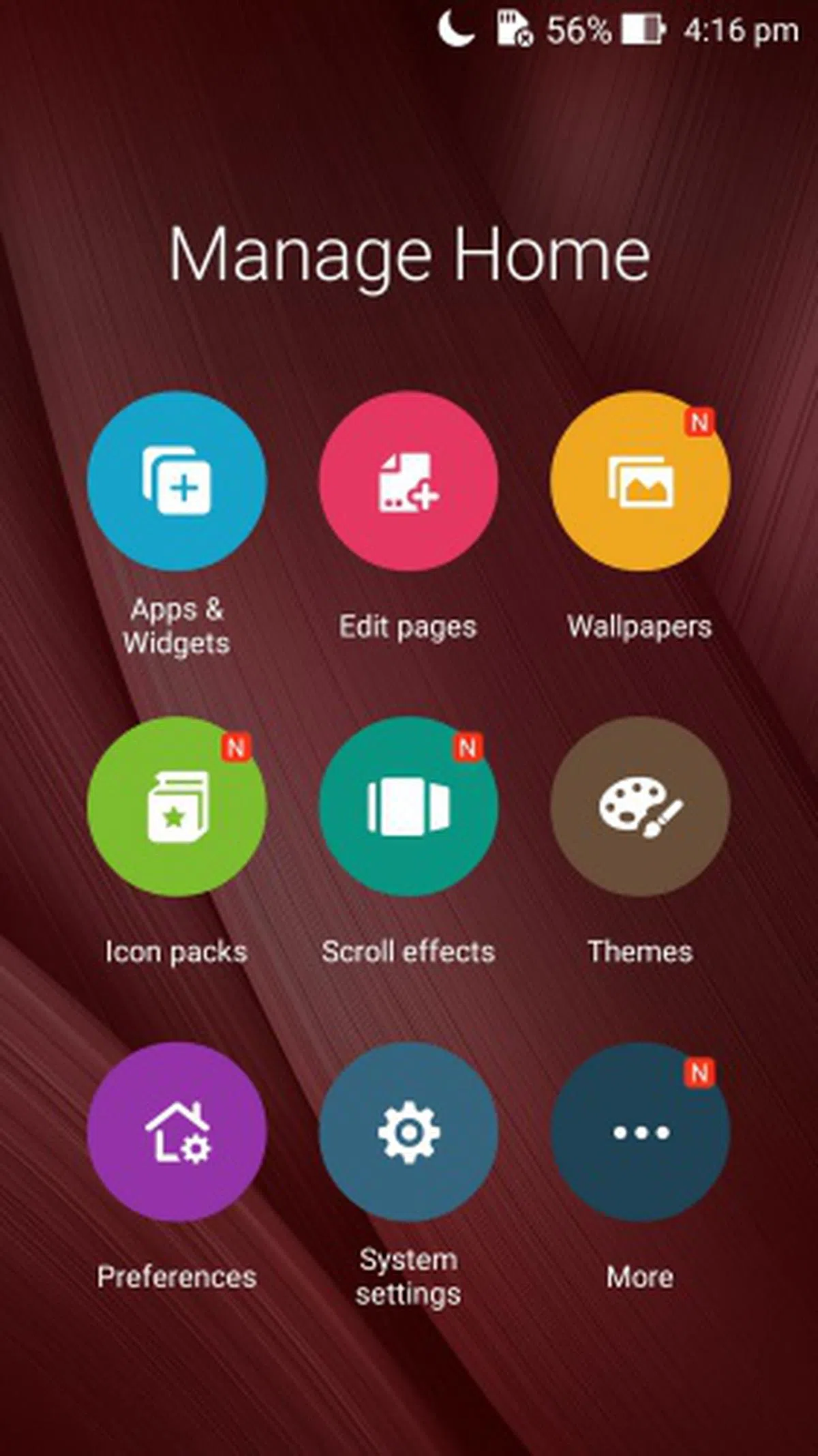 |
With HTC and Samsung stepping up the game by providing themes for their devices, ASUS also included a theme store for the ZenFone Selfie. At time of publication, there are about 17 themes in the store for you to try. ASUS has its own ZenUI Icon Pack, but you can search for more in the Google Play Store via the direct link "Get More". To customize the interface of your ZenFone Selfie further, simply swipe up from the home screen to access more tools such as scroll effects and launcher fonts.
Auto-start Manager
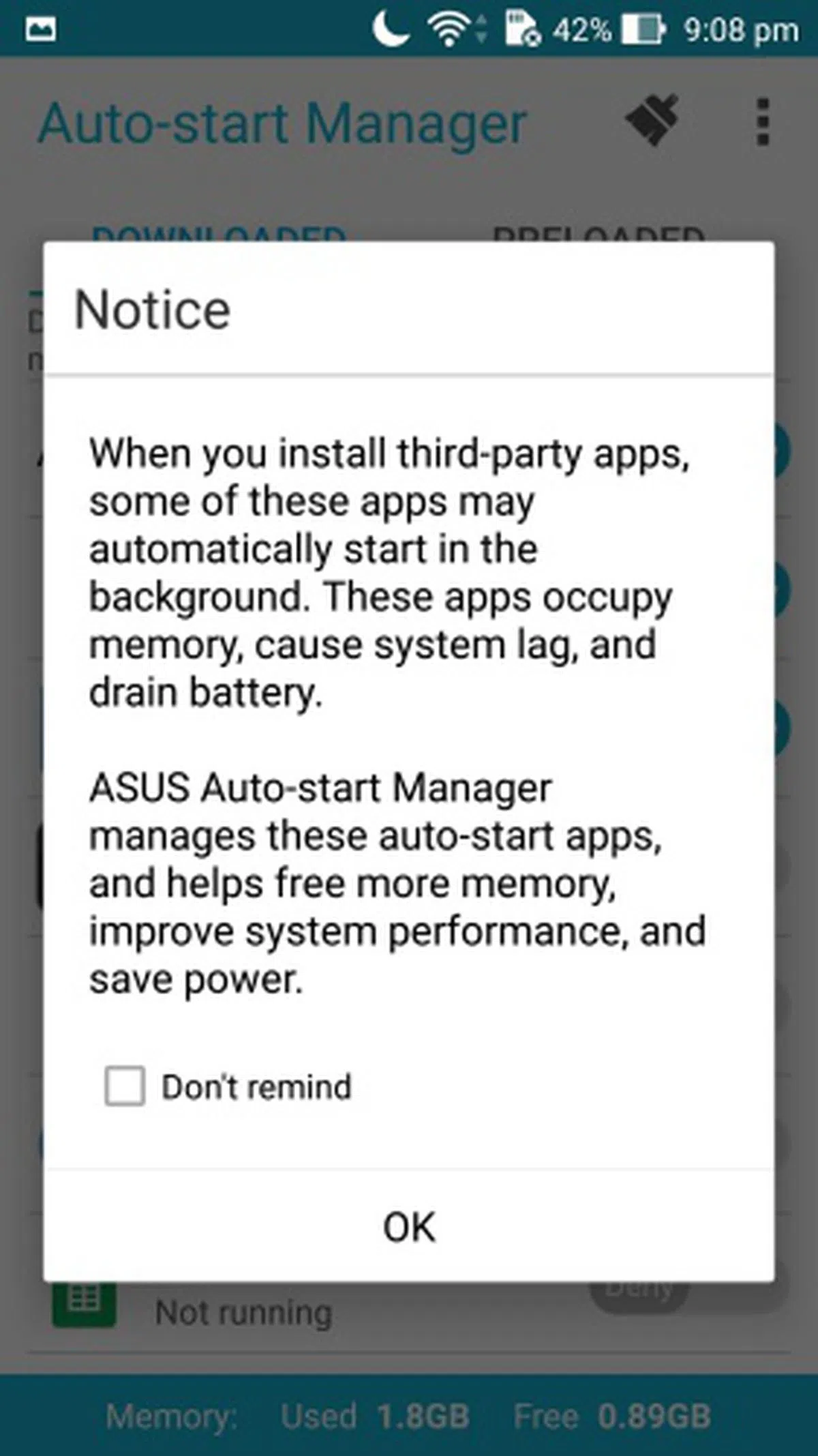 | 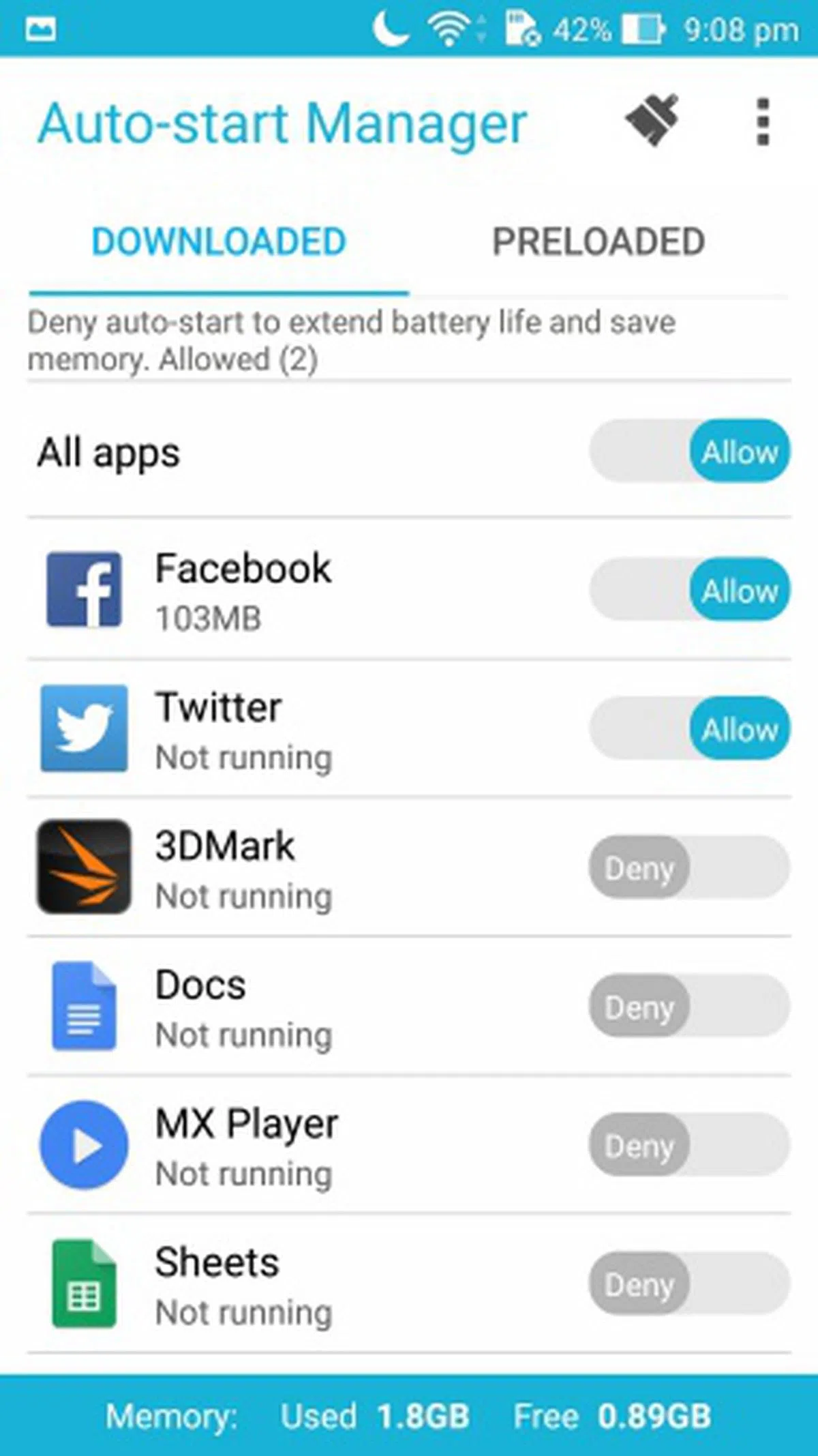 |
We all know how some rouge apps run in the background without your knowledge and cause you unnecessary trouble such as battery drain, high RAM usage or consume data unnecessarily. ASUS gives you some control over how apps run on your phone through the Auto-start Manager. You can select which downloaded and preloaded apps to autostart and which not to. The broom icon at the top right corner will help you clean up the system and free memory on the ZenFone Selfie. Auto-start Manager can be accessed via Settings > Power management > Auto-start Manager.
Power Saver
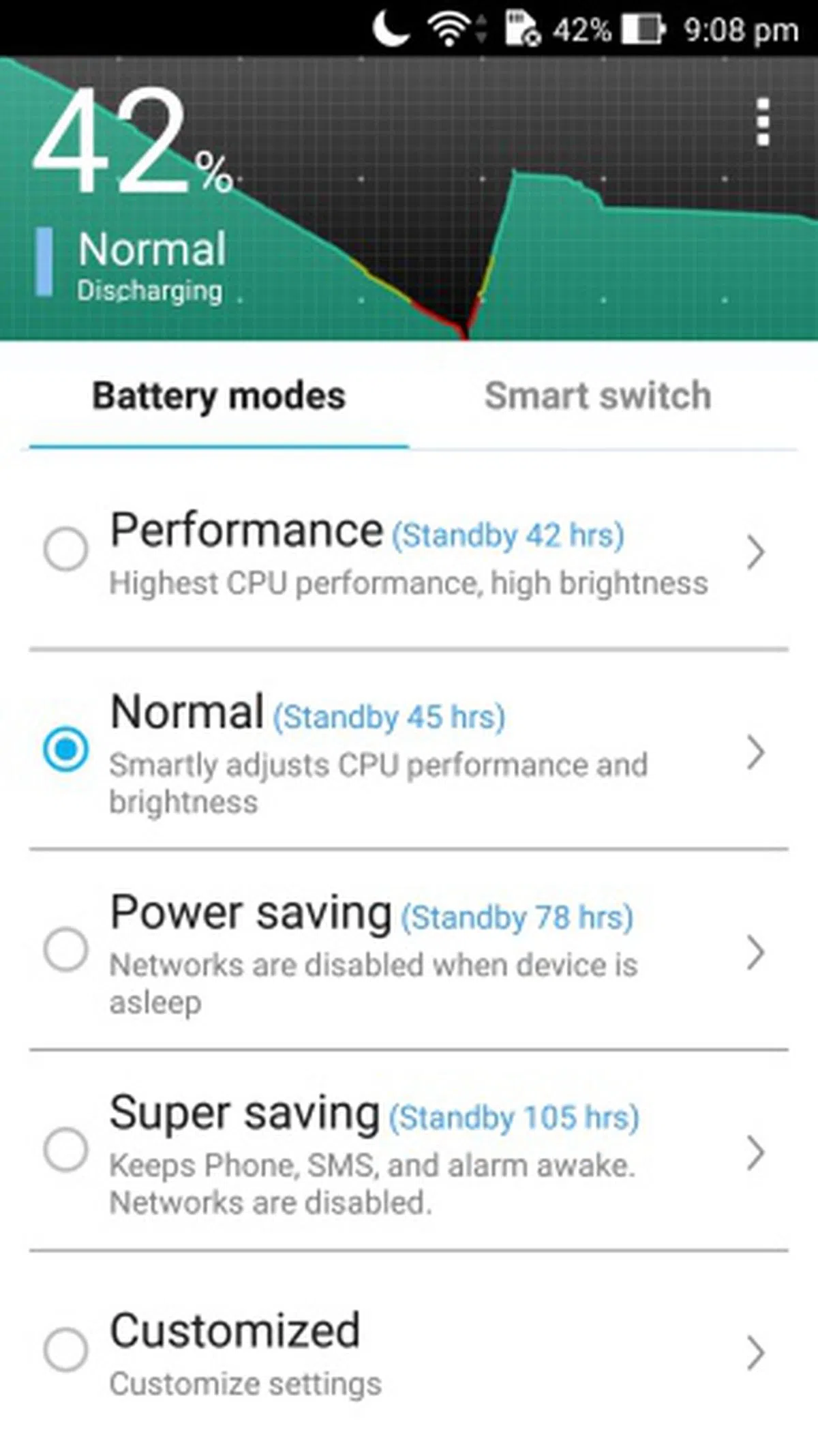 | 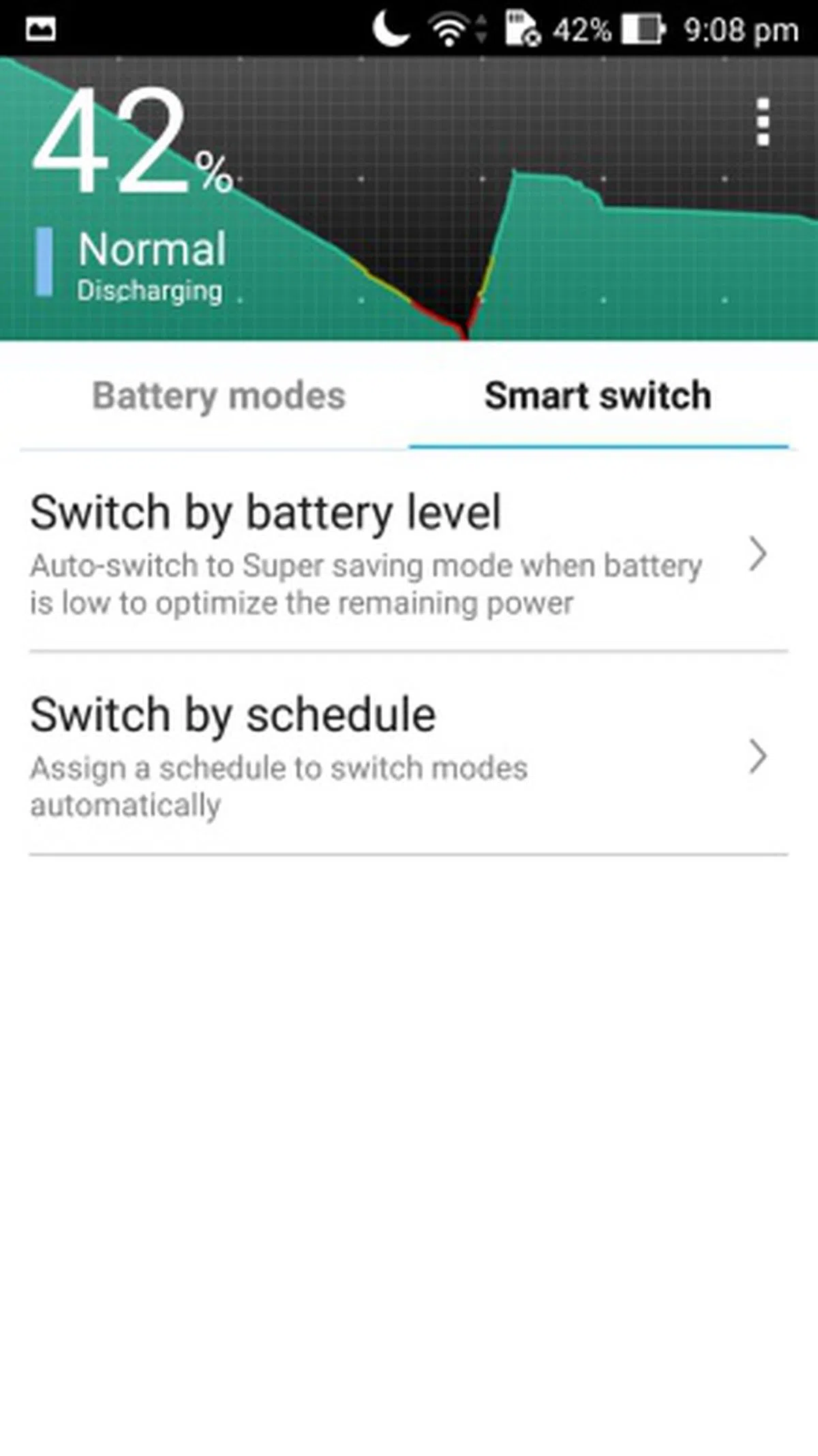 |
The 3,000mAh battery may provide more than a day of usage for most consumers, but there are times when you need to squeeze or conserve some battery juice to last through rough days. ASUS' Power Saver feature gives you a range of battery modes to choose from and even provide the estimated standby time each mode can offer. Therefore, you can select the desired mode for your needs.
Alternatively, you can enable Smart Switch where the system will automatically switch to Super saving mode when battery level hits a certain percentage (<10, 15, 20, 25, 30%) or by schedule (start and end time).
Overall, we like how ASUS continues to improve their ZenUI and make it ever more relevant for consumers. Instead of filling the phone up with fanciful or gimmicky bloatware, we find these new features somewhat useful for consumers in their day-to-day usage of the phone.
Performance benchmarks
Unlike the ZenFone 2's Intel Atom Z3580 processor, the ZenFone Selfie is powered by a Qualcomm Snapdragon 615 octa-core processor (four cores at 1.5GHz and the other four running at 1.0GHz) and 3GB RAM. This version of Snapdragon 615 differs from the one found in the Xiaomi Mi 4i where the latter has a second generation chipset with four cores running at 1.7GHz and another four power-saving cores running at 1.1GHz. For this review, we compared the ZenFone Selfie against smartphones such as the ZenFone 2 ZE551ML (4GB RAM), HTC Desire Eye, Sony Xperia M4 Aqua and Xiaomi Mi 4i.
Quadrant
Quadrant evaluates a device's CPU, memory, I/O, and 3D graphics performance. The ZenFone Selfie fared reasonably well against the competition although the second generation chipset helped the Mi 4i maintain a healthy lead.

3DMark (2013)
Originally developed as a PC gaming benchmarking tool, 3DMark now supports multiple platforms including Android. The Ice Storm benchmark is designed for smartphones, mobile devices and ARM architecture computers.
For an in-depth understanding of 3DMark for Android, do head over to our article, "3DMark - Android Device GPU Performance Review." In a nutshell, it is an OpenGL ES 2.0 benchmark test that uses fixed off-screen rendering to run two graphics tests designed to stress the GPU performance of your device and a physics test to stress its CPU performance. The benchmark consists of three test portfolios: Standard (720p resolution rendering), Extreme (1080p resolution rendering with higher quality textures and post-processing effects), and Unlimited (disabled v-sync, display scaling and other OS factors that make it ideal for chipset comparison).
Since all the recent flagship smartphones max out the scores for the Standard and Extreme tests, we will only be looking at the scores for Ice Storm Unlimited.

The ZenFone 2 is on-par with phones of its class, but was left biting the dust by the Intel-powered ZenFone 2 and the Snapdragon 801-powered HTC Desire Eye. This just means that while the phone is capable of playing most mainstream game options on the Play Store, some of the cutting-edge demanding titles may not play as smoothly as the ZenFone 2 counterpart. While it may be a concern for some, to most consumers and its intended audience, this shouldn't really matter much; as we've iterated, the performance is pretty much in-line with most other devices of its class.
SunSpider JavaScript
SunSpider JavaScript helps measure the browsing performance of a device when processing Javascript. It not only takes into consideration the underlying hardware performance, but also assesses how optimized a particular platform is at delivering a high-speed web browsing experience. Unfortunately, the ZenFone Selfie scored the worst in this benchmark and was again no match for the ZenFone 2.

Synthetic benchmarks aside, we found the user experience on the ZenFone Selfie to be a pleasant one. It was generally smooth and we did not encounter any hiccups.
Camera performance
As a selfie-centric phone, it is only natural that ASUS crams the best imaging technologies in the ZenFone Selfie and it should be no surprise that the company's PixelMaster makes an appearance in both the front and rear cameras. If you want a quick recap of what PixelMaster is all about, do check out our article: Five things you need to know about ASUS's PixelMaster camera technology. Here's the rundown on its imaging specs:
- Front facing camera: 13-megapixel sensor, f/2.2 aperture, 5-element lens, 88 degrees wide-angle, blue glass filter, real tone LED flash
- Rear facing camera: 13-megapixel sensor, f/2.0 aperture, 5-element lens, 0.2s laser autofocus, blue glass filter, real tone LED flash

It's amazing how there are 17 different modes for both the front and rear facing cameras on the ASUS ZenFone Selfie.
While Samsung has simplified its camera interface on this year's smartphones, ASUS continues to throw everything but the kitchen sink in the ZenFone Selfie. For consumers who love to play around with the different camera modes, this could come in handy. On the flip side, some users may just want to fire up the camera and take the shot without having to sort through the different modes. Some of the camera modes (low light, HDR, Manual) were explored in our review of the ZenFone 2, so do check them out if you are interested. Here, we shall take a look at the star feature - Selfie Panorama.
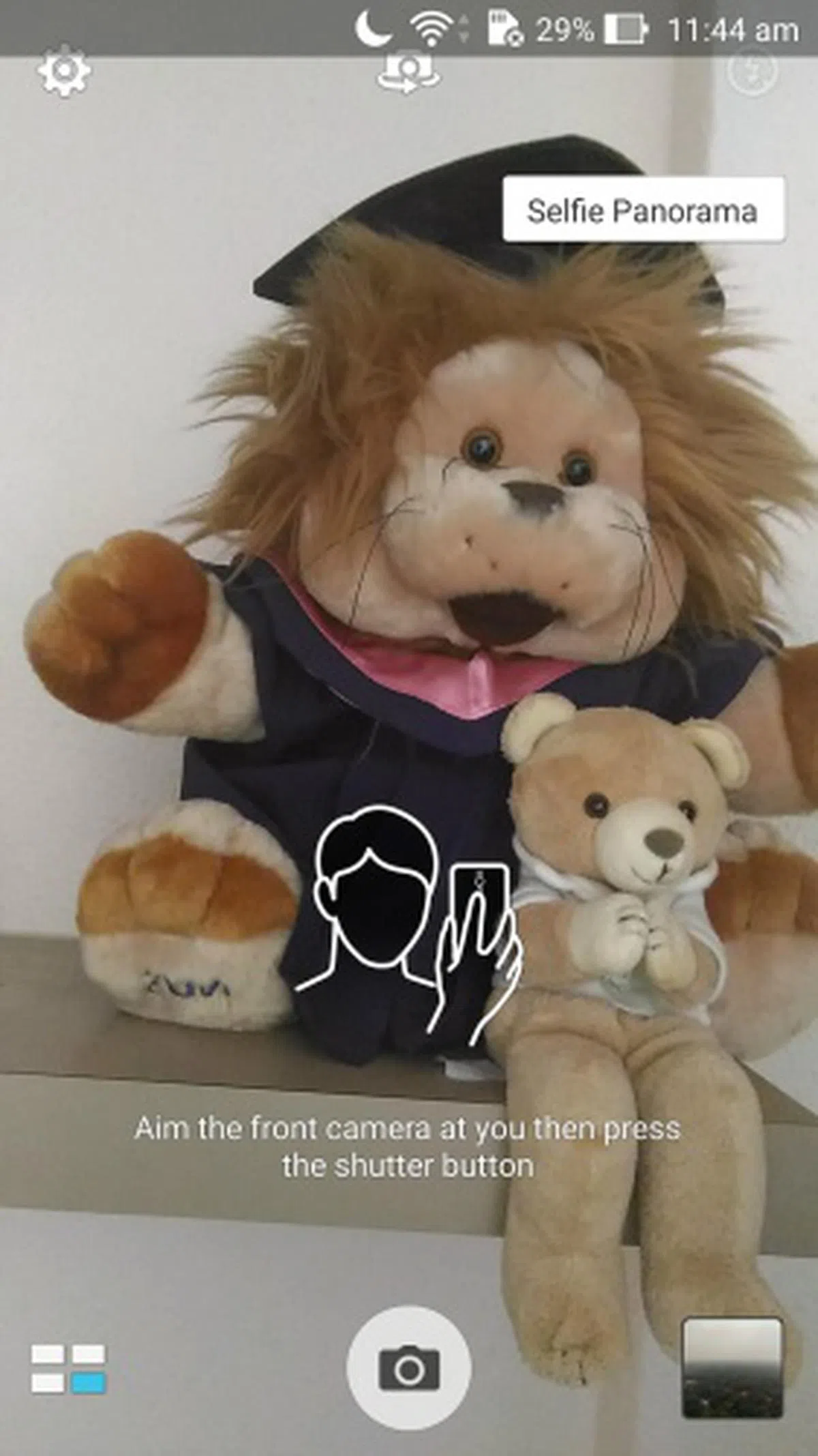 | 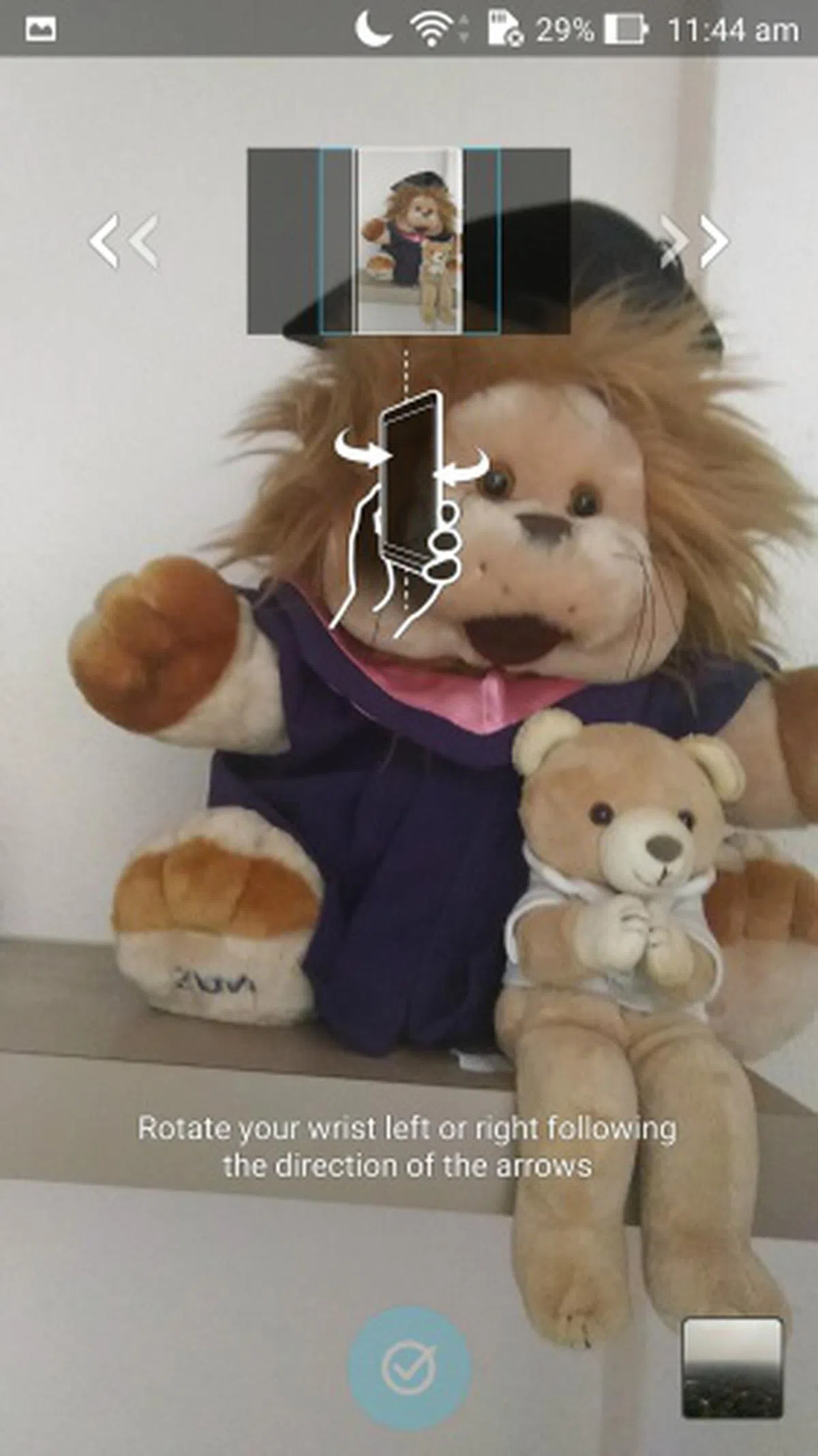 |
The ZenFone Selfie allows you to take wider selfies through hardware and software means. You have a 88-degree wide-angle lens (hardware) and a panorama feature (software) to capture up to 270 degrees of scenery. The concept for selfie panorama is not new; we've seen similar implementations in the Samsung Galaxy Note 4 and other Android phones. Here's how you take a selfie panorama on the ZenFone Selfie:-
- Switch to the front-facing camera
- Select Selfie Panorama
- Either tap the camera icon in the middle of the screen or press the volume button on the rear
- Move the phone slowly to the left or right
- Align the white box with the blue frame on the left or right
The key to taking good selfie panoramas is practice and steady hands. During our initial attempts with the feature, we could not achieve well-stitched selfie panoramas as our frame of shot kept shifting up or down, which is inevitable while trying to level free-handed. Below is a short video summary of the special selfie features as showcased by ASUS at Computex Taiwan earlier this year:


The image quality is good for a 13-megapixel shooter. Sufficient details are captured with good color balance.

The macro focusing of the ASUS ZenFone Selfie is great although it takes slightly more than a second to get the subject focused!

Notice how the fine hairy structures of the plant are captured by the 13-megapixel rear camera of the ASUS ZenFone Selfie.
Battery performance
Our standard battery test for mobile phones includes the following parameters:
- Looping a 800 x 480-pixel video with screen brightness and volume at 100%
- Wi-Fi and Bluetooth connectivity turned on
- Constant data streaming through email and Twitter
In our standard video battery test, the ZenFone Selfie lasted the longest with an uptime of 9 hours and 35 minutes. That translates to an estimated 40% more battery mileage than the Mi 4i even though the latter has a smaller screen and bigger 3,120mAh battery. The battery longevity of the ZenFone Selfie is attributed to its low power consumption (1.21watts) with the ZenFone 2 coming in second place at 1.74watts. We suspect part of the power savings is due to the choice of processor SKU used on the ZenFone Selfie such as a much lower clocked processor than the ZenFone 2 and the Xiaomi Mi 4i. However, there's definitely more going for the ZenFone Selfie like well optimized software and hardware since the Sony Xperia M4 Aqua using the same processor doesn't exhibit the same level of power draw.


Portability
We measure the portability of a device by calculating its battery life to (weight x volume) ratio. Even though the ZenFone Selfie has the largest footprint among the phones compared, its superior battery life helped to push up its standing in the Portability Index.
Like the ZenFone 2, the ZenFone Selfie boasts fast charging technology. This is also made possible by the 5V/2A 10W charger which is included in the retail package. We charged a flat battery for 15 minutes and it attained 38%!
Conclusion
Available in three colors (pure white, baby pink and tiffany blue) with a retail price of S$399 (without line contract) from 26th September , the ZenFone Selfie is priced quite decently for a mid-range smartphone. You can get a promotional price of S$379 with the free Lolliflash accessory worth S$17.90 if you purchase the phone from 26th September to 31st October.
While it retains the basic DNA of the ZenFone 2, the ZenFone Selfie does comes with some differentiating features such as the 13-megapixel front-facing camera (the ZenFone 2 has a 5-megapixel sensor), a removable battery, Corning Gorilla Glass 4 (enhanced resistance to scratches) and a Qualcomm Snapdragon 615 octa-core processor.
Even though the Snapdragon 615 chipset lags slightly behind the Intel chipset of the ZenFone 2 in the performance benchmarks, it still offers better battery mileage. Moreover, Qualcomm allows you to optimize the battery longevity on the ZenFone Selfie through Battery Guru, an app developed specifically for Snapdragon-powered devices. At the end of the day, the decision to purchase the ZenFone Selfie or the ZenFone 2 depends on how much you value hardcore mobile gaming + benchmark performance, and if you can live with the ZenFone Selfie's more feminine colors. If mobile gaming is the most important factor for you, or if the only color you recognize is some shade of black or gunmetal gray, get the ZenFone 2, otherwise, the ZenFone Selfie is as good or better in all other areas.
Our articles may contain affiliate links. If you buy through these links, we may earn a small commission.